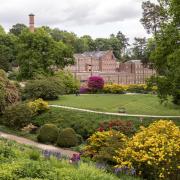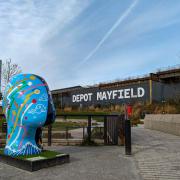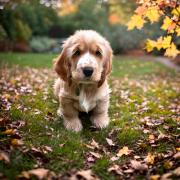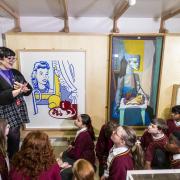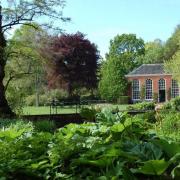After almost a century of neglect, works by pioneering local artist Annie Swynnerton form a major exhibition in Manchester.

She was the first woman to be elected an associate of the Royal Academy, her work was praised by the likes of John Singer Sargent and Auguste Rodin and her nudes were so daring they often shocked Victorian society.
Yet, the Manchester artist Annie Swynnerton is today largely unknown.
That is all about to change thanks to Manchester Art Gallery which is staging the first retrospective of her work for nearly a century.
‘Painting Light and Hope’ features 36 of her pictures spanning a career that lasted until her death in 1933.

More than a dozen works are from the gallery’s own collection with loans from galleries including the Royal Academy, the Tate and the Walker Art Gallery, Liverpool.
The exhibition also features a number of rarely seen paintings on loan from private collections.
It means that at last there is a showcase for the work of a pioneering professional artist who challenged convention in art and life.
Annie was born in Hulme in 1844, the daughter of Ann Sanderson and Francis Robinson, a not terribly successful solicitor and Annie sold her watercolours to boost the family income. With six sisters, they took a lot of maintaining.

She trained at the Manchester School of Art from 1871, winning a gold prize and a scholarship.
This allowed her to study art in Rome from 1874 to 1876, travelling there with her friend and fellow artist, Salford-educated Susan Isabel Dacre.
They later studied at the Académie Julian in Paris until 1880 when Annie returned to Manchester before setting up home in London.
However, she obviously had a passion for Rome, living there for extended periods. While there she met sculptor Joseph Swynnerton, originally from the Isle of Man. They married in 1883 and lived primarily in Rome but had a studio in Shepherd’s Bush in London.

Italy’s impact on her as an artist comes through in the vibrant colours and gestural paint of her portrayals of women that are a highlight of this exhibition.
The catalogue for a Tate exhibition called ‘Exposed – The Victorian Nude’ stated: ‘Rome based Annie Swynnerton was one of the most daring female painters of the nude, often shocking audiences with her robustly painted figures.’ Her work represented women of all ages and walks of life, challenging conventions of beauty concentrating more on capturing female power, strength, hope and potential at a time when women’s roles were changing.
Her shimmering nudes, winged figures and portraits of suffragettes show the importance of female networks and solidarity to Swynnerton’s art.
Her portrait of suffragist Dame Millicent Fawcett, founder of the National Union of Women’s Suffrage Societies, will be one of the pictures on loan from the Tate.
Equal rights for women was a cause close to Annie’s heart.She also campaigned for better opportunities for women artists, setting up the Manchester Society of Women Painters, challenging the Manchester Academy of Fine Arts to open up membership, exhibitions and training to women.
Annie exhibited internationally, including at the Salon de la Société Nationale des Beaux-Arts, Paris in 1905.
This brought her to the attention of Auguste Rodin who praised her work.
Like Rodin, in her later paintings Swynnerton experimented with figurative abstraction.
Manchester Art Gallery’s Rodin sculptures Eve and The Age of Bronze is on display during the exhibition run.
Alison Smith, lead curator of British Art to 1900 at the Tate says: ‘Manchester Art Gallery’s exhibition on Annie Swynnerton is much anticipated and long overdue.
‘As a painter of ambitious figurative subjects and a forthright campaigner for female suffrage, she forged a bold style of painting that bordered on abstraction. Her powerful compositions and vibrant use of colour were admired by some of the most famous artists of the day.
‘Now we have the opportunity to admire Swynnerton’s achievement in what is the first major exhibition of her work since 1923.’
Dame Laura Knight became a full Royal Academician in 1936, three years after Annie’s death.In her autobiography Oil Paint and Grease Paint, Dame Laura wrote: ‘We women who have the good fortune to be born later than Mrs Swynnerton profit by her accomplishments.
‘Any woman reaching the heights in the fine arts had been almost unknown until Mrs Swynnerton broke down the barriers of prejudice.’
Annie Swynnerton’s ‘Painting Light and Hope’ is at Manchester Art Gallery until January 2019.






